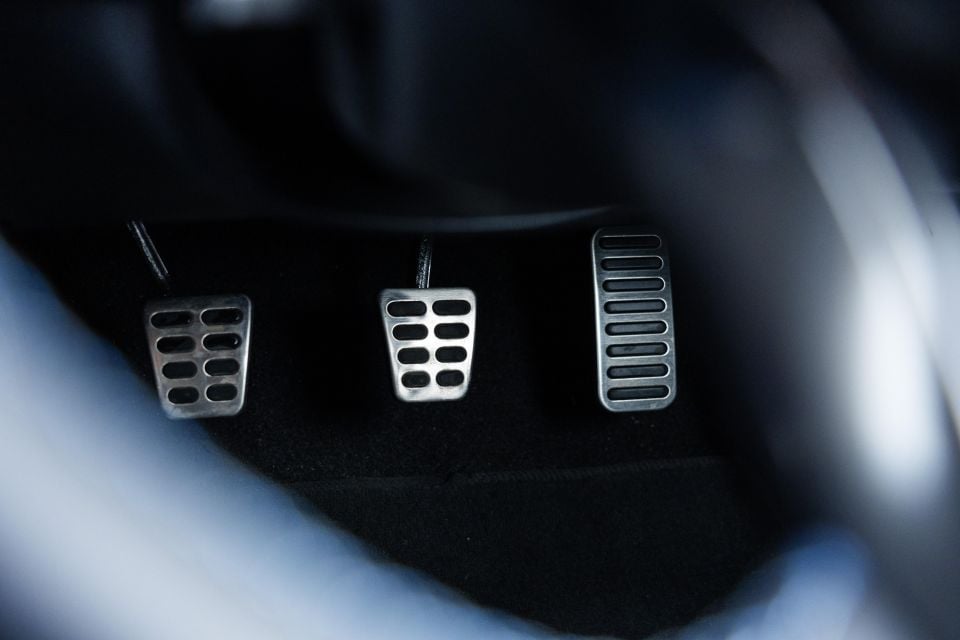

Ben Zachariah
Video: Off-road battle for Beer O’Clock Hill has automakers scrambling
4 Hours Ago
It's been a long time between drinks, but I spent a chunk of time in three-pedal cars last week. It was better than I'd remembered.

Contributor


Contributor
I’ve owned four cars, and three of them have featured a manual transmission.
The first was a 2007 Subaru Liberty wagon (rubbery shift, needed six gears instead of five), and the second was a 2011 Subaru Outback (heavy clutch, light and unusually short shift, sticky throttle), so it’s not as if they were sports cars where having three pedals was a central part of the appeal.
After those two (and a carless stint overseas) came a 2016 Subaru BRZ (short, sharp shift, clunky between first and second on cold starts). I only owned it for 12 months before press cars started rolling in, and I was left with nowhere to park it.
Since then, I’ve driven mostly automatic cars. My 2005 Mitsubishi Pajero has a five-speed automatic, and the majority of the new cars we review have two pedals, not three.

Of the roughly 150 reviews of mine published on CarExpert, just seven have been of manual cars.
Last week though, in the process of putting together our i30 Sedan N v Subaru WRX RS comparison, I spent a solid 10 days commuting in stick shift cars. Sure, there was some fun driving in there as well, but for the most part it was just clutch in, clutch out between Hampton and Southbank.
I loved it. I’ve missed it.
Not because it’s a more pure driving experience or other enthusiast rubbish, but because it put me in control of the car again.


No matter how smart an automatic transmission is, it isn’t plugged into your brain. Even the best out there (PDK is up there, as is the ZF transmission tuned by BMW) do things the driver doesn’t want sometimes; shifting up too early or hanging onto gears too long.
The car’s computer brain can’t see a gap opening up in traffic ahead and preemptively shift from fifth to third, it has to wait until you jump on the accelerator to downshift. There’s just a hint of lag, an extra step in the process, that leaves space for the car to do something you don’t want it to.
Just because you dip the accelerator past halfway in its travel doesn’t mean you want to change down, for example. Maybe you just want to lean on the engine’s torque to squirt from 50 to 60km/h in fifth. Driving a manual gives you that choice.
Then there’s the joy of heel-toeing. In a car like the i30 N it lets you revel in the obnoxious exhaust, and enjoy the slick shift, every time you slow down. Sure, you look like a knob from the outside, but it’s so satisfying inside.
I’m not here to say every new car should be a manual, or that people who buy automatics are lesser car enthusiasts than people who row their own. The Mercedes-Benz C300 we have this week, for example, would be a much worse car with three pedals than two.
But finally spending some time in manual cars has reinforced the fact the next car I buy will hopefully feature a stick shift. Sure, they’re less convenient sometimes, and my mates won’t be able to drive it (ahhh no however will I live?!), but it’s just more fun.
I love the look of the new Civic Type R, and the idea of experiencing a typically slick Honda shift daily (or close to it) is pretty appealing… provided the price is right. But that’s another story.
Scott Collie is an automotive journalist based in Melbourne, Australia. Scott studied journalism at RMIT University and, after a lifelong obsession with everything automotive, started covering the car industry shortly afterwards. He has a passion for travel, and is an avid Melbourne Demons supporter.


Ben Zachariah
4 Hours Ago


CarExpert.com.au
12 Hours Ago


Damion Smy
1 Day Ago


Damion Smy
1 Day Ago


Damion Smy
1 Day Ago


Damion Smy
1 Day Ago